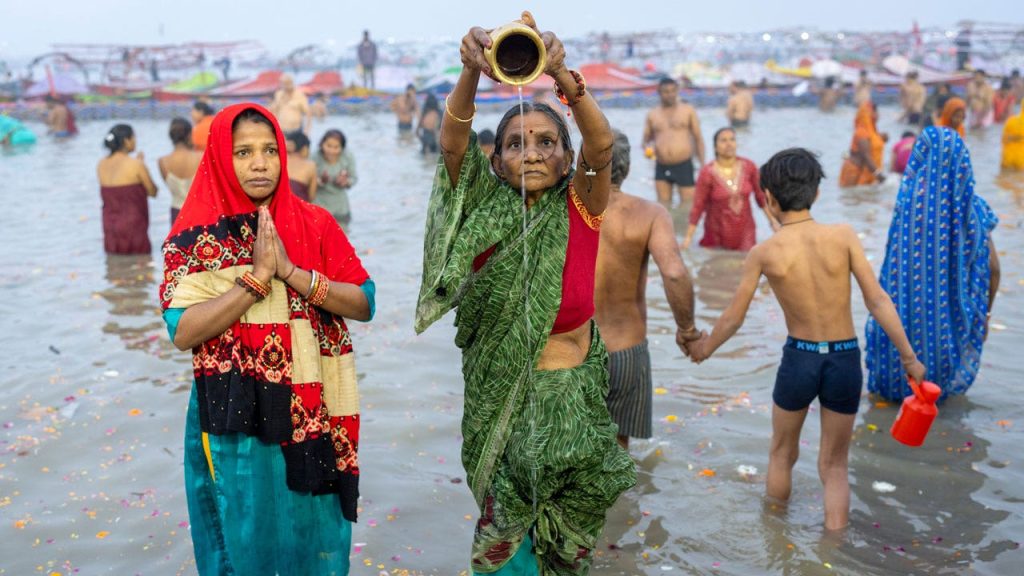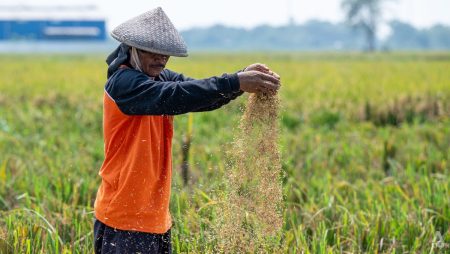The Maha Kumbh Mela, a monumental Hindu pilgrimage, commenced in Prayagraj, India, drawing an anticipated 400 million visitors over 45 days. This colossal gathering centers around the confluence of three sacred rivers—the Ganges, Yamuna, and the mythical Saraswati—where devotees partake in ritualistic bathing to cleanse past sins and strive for liberation from the cycle of rebirth. This ancient festival, dating back to medieval times, finds its roots in Hindu mythology, specifically the tale of Vishnu retrieving the nectar of immortality from demons, with drops believed to have fallen in Prayagraj and three other holy cities.
The Kumbh Mela, held cyclically every 12 years in Prayagraj, Nasik, Ujjain, and Haridwar, is a vibrant spectacle of faith and tradition. Naked, ash-smeared monks lead the charge into the holy waters at dawn on auspicious days, while millions of pilgrims observe austerity, offer alms, and participate in daily sunrise baths. The 2024 Maha Kumbh in Prayagraj surpasses its 2019 counterpart, the Ardh Kumbh, which hosted 240 million visitors. This year’s festival presents a formidable logistical challenge for Indian authorities, requiring meticulous planning to accommodate the massive influx of pilgrims.
The scale of the Maha Kumbh dwarfs other major religious gatherings, with projected attendance exceeding the population of the United States. It significantly outstrips the annual Hajj pilgrimage to Mecca and Medina, highlighting its global significance as a religious event. The Indian government has undertaken extensive preparations to manage this unprecedented gathering, transforming a vast area along the riverbanks into a temporary metropolis equipped with kitchens, restrooms, housing, essential infrastructure, and medical facilities.
The festival carries profound political implications within India’s socio-political landscape. Under Prime Minister Narendra Modi and his Bharatiya Janata Party (BJP), the Maha Kumbh has become a prominent symbol of Hindu nationalism. The government’s substantial investment of over $765 million in the event underscores its political importance. Billboards and posters featuring Modi and Uttar Pradesh Chief Minister Adityanath, a prominent Hindu monk and politician, further illustrate the intertwining of religious and political agendas.
The BJP leverages the Kumbh Mela to reinforce its Hindu nationalist platform, promoting Hindu cultural symbols to consolidate its support base. Critics argue that this ideology promotes Hindu supremacy, marginalizing other religious communities. The renaming of Allahabad to Prayagraj, echoing a broader national trend of replacing Mughal-era names with Hindu ones, exemplifies the BJP’s efforts to reshape India’s cultural identity.
The government’s handling of the 2021 Kumbh in Haridwar during a surge in COVID-19 cases drew criticism for prioritizing religious considerations over public health. The decision not to cancel the festival despite the health risks highlighted the political tightrope walk inherent in managing such a significant religious event. The Maha Kumbh Mela, therefore, serves as a powerful lens through which to examine the complex interplay of faith, politics, and identity in contemporary India.










